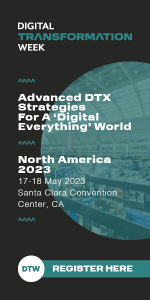
It’s very easy for personalization to backfire and subtract value instead of add it.
Consider the troubling fact that we may be arriving at a moment in hyper-personalization’s journey where the most hyper-personalized offer is no offer at all. Nobody likes to be constantly bombarded by content, personalized or not.
And that’s the paradox of hyper-personalization: if everyone’s doing it, then, in a sense, nobody is.

5G and related technologies such as IoT and edge computing are giving companies the opportunity to make hyper-personalization even more “hyper” via broader bandwidths and the faster processing of higher volumes of data.
This means we’re at a very interesting inflection point: where do we stop? If the promise of 5G is more data, better data, and faster data, and the result is knowing our customers even better to bug them even more, albeit in a “personal” way, when, where, and why do we say, “hold on—maybe this is going too far.”?
How do you do hyper-personalization well in a world where everyone else is doing it and where customers are becoming increasingly jaded about it and worried about how companies are using their data?
Let’s first look at what’s going wrong.

Hyper-personalization and bad data
Hyper-personalization is very easy to mess up, and when you do mess it up it has the exact opposite of its intended effect: it drives customers away instead of keeping them there.
Consider an online ad for a product that pops up for you on a website a couple days after you already bought the thing being advertised for. This is what I call “noise”. It’s simply a nuisance, and the company placing that ad—or rather, the data platform they’re using to generate the algorithms for the ads—should already know that the person has already bought this item and hence present not a “repeat offer” but an upsell or cross-sell offer.
This sounds rudimentary in the year 2022 but it’s still all too common, and you’re probably nodding your head right now because you’ve experienced this issue.
Noise usually comes from what’s known as bad data, or dirty data. Whatever you want to call it—it pretty much ruins the customer experience.
Hyper-personalization and slow data
The second major issue is slow data, which is any data being used way too slowly to be valuable, which usually includes data that has to the trip to the data warehouse before it can be incorporated into any decisions.
Slow data is one of the main reasons edge computing was invented: to be able to process data as closely to where it’s ingested as possible in order to use it before it loses any value.
Slow data produces not-so-fun customer experiences such as walking half a mile to your departure gate at the airport, only to find that the gate has been changed, and then, after you’ve walked the half mile back to where you came from, getting a text message on your phone from the airline saying your gate has been changed.
Again, whatever you want to call it—latency, slow data, annoying—the end result is a bad customer experience.
How to fix the hyper-personalization paradox
I have no doubt that the people who invented hyper-personalization had great intentions: make things as personal as possible so that your customers pay attention, stay happy, and stay loyal.
And for a lot of companies, for a long time, it worked. Then came the data deluge. And the regulations. And the jaded customers. We’re now at a stage where we need to rethink how we do personalization because the old ways are no longer effective.
It’s easy—and correct—to blame legacy technology for all of this. But the solution goes deeper than just ripping and replacing. Companies need to think holistically about all sides of their tech stacks to figure out the simplest way to get as much data as possible from A to B.
The faster you can process your data the better. But it’s not all just about speed. You also need to be able to provide quick contextual intelligence to your data so that every packet is informed by all of the packets that came before it. In this sense, your tech stack should be a little like a great storyteller: someone who knows what the customer needs and is feeling at any given moment, because it knows what’s happened up to this point and how it will affect customer decisions moving forward.
Let’s start thinking of our customer experiences as stories and our tech stacks as the storytellers—or maybe, story generators. Maybe then our personalization efforts will become truly ‘hyper-personal’— i.e., relevant, in-the-moment experiences that are a source of delight instead of annoyance.
David Flower brings more than 28 years of experience within the IT industry to the role of CEO of Volt Active Data. Flower has a track record of building significant shareholder value across multiple software sectors on a global scale through the development and execution of focused strategic plans, organizational development and product leadership. This piece is exclusive to Broadband Breakfast.
Broadband Breakfast accepts commentary from informed observers of the broadband scene. Please send pieces to commentary@breakfast.media. The views expressed in Expert Opinion pieces do not necessarily reflect the views of Broadband Breakfast and Breakfast Media LLC.
Originally posted on September 8, 2022 @ 2:56 pm


